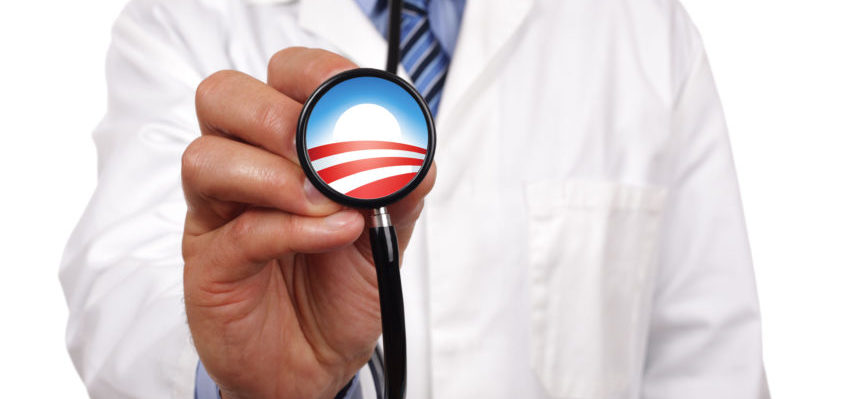
Onerous “Cadillac Tax” looms large over future budgets
By Chris Rochester
February 16, 2016
Many large employers have found themselves barely treading water in the wake of Obamacare and state governments are no different. Wisconsin will soon face a decision that has the potential to save the taxpayers tens of millions of dollars per year – and potentially much more if Obamacare and the “Cadillac Tax” cruise along as planned.
That decision is whether to switch to a self-insured model for its health insurance for state employees. Self-insurance means the state will collect premiums from state employees and pay health insurance claims itself, rather than farming out its insurance business to 17 health insurance plans around the state.

The state government’s current health insurance system is being reviewed, in large part, because of the impending threat of steep penalties under Obamacare. The current health insurance plan for Wisconsin government employees would most likely be subject to the Affordable Care Act “Cadillac tax.” The Cadillac tax is a 40 percent excise tax applied to those plans that provide health insurance benefits over $10,000 in value annually.
Sentinels of the status quo have spent a lot of energy and many column-inches insisting the change would take away the gold-standard plans enjoyed by state employees, but the question of whether there’s a more cost-effective way to administer the existing benefits over the long-term seems to go unasked.
At its meeting this week, the state’s Group Insurance Board (GIB) will vote on requesting proposals for a switch to self-funded insurance. Those proposals will answer the question of whether the self-funded model will save money, and if so, how much.
In this debate, facts seem to be drowned out by the knee-jerk reaction that such a switch would be somehow revolutionary. In fact, it’s anything but. As of 2011, 60 percent of all private sector workers were enrolled in self-insured plans.
Self-insurance is also a better option for 90 percent of all large employers, companies that employ 5,000 or more employees. The reason is economical: the self-funded insurance model saves money compared to farming out the business to multiple insurance companies, each with its own overhead costs.
But what about state governments? As of 2010, 46 states used self-insurance in some way. At least 20 states self-fund all of their state employee health plans, including Minnesota, which moved to fully self-funded insurance in 2002. Some Wisconsin politicians eager to oppose the very thought of self-insurance also point to Minnesota as a role model. Which is it?
Would self-funded insurance be a revolutionary change in Wisconsin? Nope. Wisconsin currently self-insures its “Standard” health insurance plan, its “Pharmacy Plan”, and in 2016 it will self-insure its dental plan. Gripes about access and affordability of those plans are not among the voices echoing through the Capitol dome.
Moving all state government employees to a self-insurance system would save $42 million annually, according to a report by consulting firm Segal Consultants. While such a switch would save taxpayers a great deal of money, it would likely have little impact on the accessibility of care. The GIB plans to construct its RFP with a requirement that existing providers be maintained, allowing state employees who like their doctors and hospitals to keep their doctors and hospitals.
Victims of Obamacare’s empty promise to the same effect could only hope for such a deal.
A self-funded system would also be more nimble than the current disjointed system, so the state’s insurance plan could be adjusted immediately in response to the rapid-fire changes that create uncertainty in the healthcare industry in the era of Obamacare.
While Gov. Scott Walker pledged in his 2016 State of the State address to put all money saved by changing how the state administers its health insurance directly into public education, state legislative leaders have been more reluctant. Assembly Speaker Robin Vos echoed opponents’ claims that the switch would disrupt the insurance market, though even the insurance plans that do the highest percentage of their business with the state are unlikely to go bust.
Senate Majority Leader Scott Fitzgerald was more pointed, telling Wisconsin Public Radio that any change to the state health insurance system won’t happen in 2016.
The state’s powerful Joint Finance Committee also essentially gave itself veto power over any such changes last year, and both Vos and Fitzgerald have said they want hard numbers and would need to see major savings.
The GIB will decide this week whether to request proposals from potential administrators of a self-insured system, which will put into black and white the kind of savings self-insurance will bring. Decision makers and the legislature should also keep in mind the necessity of saving the state budget from the Cadillac Tax, which will require thinking long-term.
Obamacare essentially has Wisconsin cornered. The unsustainable long-term cost of the current health insurance model coupled with the looming Cadillac Tax tidal wave forces Wisconsin’s hand and highlights the ripple effect of the (Un)Affordable Care Act from the top, in Washington, to the bottom – consumers of healthcare.